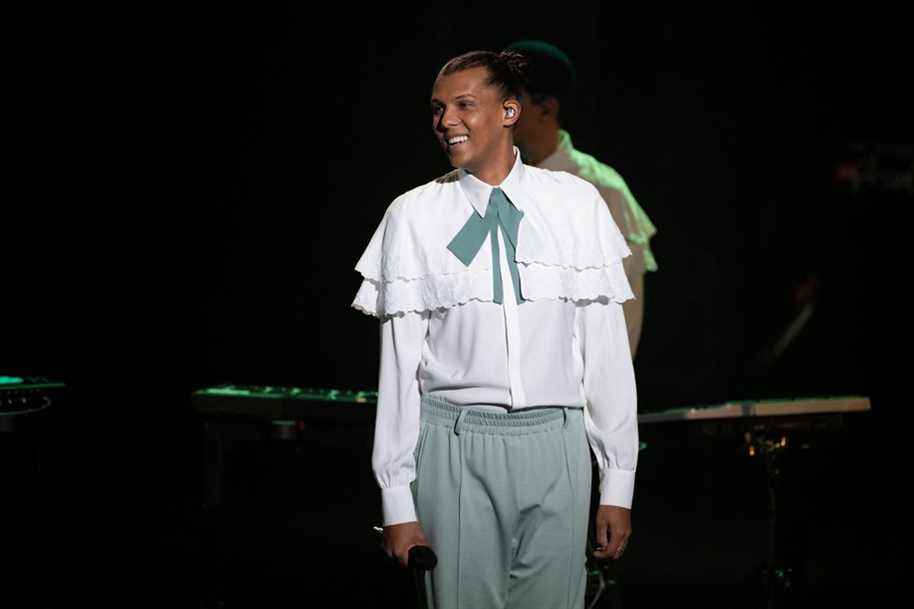Posted at 7:00 a.m.
Stromae was a bit rusty when The Press spoke to him in early December. He had granted at that time only one other interview about his new disc, Multitude, to be released on March 4, and lacked perspective on his new songs. He wondered if he was next to the plate, was afraid of crashing, but also said he felt much less pressure than at the end of Square rootin the spring of 2013.
Paul Van Haver, his real name, remembers that, at the time, he still had everything to prove. In particular that he was not the singer of a single hit – Then we dance, the track that made him famous. “I had extraordinary success with my second album, so it’s a little different,” observes the 36-year-old Belgian singer, during a videoconference interview from a living room adjoining his studio. Brussels.
Extraordinary, the success of Square rootit was. Powered by the trainer Papaoutai and the pathos great, this record raised him to the top of French-speaking pop. He has sold more than 2 million records, performed more than 200 concerts and boasts nearly 11 million monthly listeners on the Spotify platform – almost twice as many as Angèle and five times as many as Zaz.

PHOTO BERNARD BRAULT, PRESS ARCHIVES
Stromae during a concert at the Bell Center in Montreal in 2014
A normal life ”
We have read the story in snatches over the past few years: Stromae, exhausted, sick, depressed, wanted to take a break from his career. A dark passage that he evokes in Unbeatena combative song that opens its disc, and hella piece in which he tackles the question of suicide head-on, an extract of which he sang on a French television news program in January.
He first stopped for three months in 2015. “It really helped me, it’s the principle of getting back on the bike quickly. I canceled dates, he recalls, but I finished my tour anyway. “Once the concerts were over, he began a real break, in order to find” a normal life “. “When I say a normal life, that means a more or less normal life,” he admits, knowing that his celebrity alone means that he no longer has a life like the others.
I was lucky enough to have a child, so that fits. It took me out of my belief that it was in pain that good things were born. Good things can also come out in the day-to-day by working from 9 a.m. to 5 a.m., as most people do. You don’t have to have a rundown life to be an artist.
Stromae
Reconnecting with music was a bit difficult at first, says Stromae. “I made my own life,” he says, referring to a studio life that resembles an office life with its coffee breaks and lunch outings. He acts in the shadows, collaborates among others with Orelsan, Bigflo and Oli and even Coldplay (Arabesqueon the album Everyday Life).

PHOTO BERTRAND GUAY, AGENCE FRANCE-PRESSE ARCHIVES
Orelsan and Stromae
Dancing differently
Multitude marks a change in Stromae’s musical trajectory. He moves away from the electro and dancing pop of his first two discs to go towards music that is always rhythmic, but with more multiple influences, precisely. “I realize that I had gone around a bit,” he says of dance pop. I’m not going to just do electro albums. It doesn’t make me dance as much as it used to, actually. »

PHOTO BERTRAND GUAY, AGENCE FRANCE-PRESSE ARCHIVES
Stromae during a performance at the Victoires de la Musique, in France, on February 11
What comes to him first when he composes are the rhythms. “As a kid, I was banging pots in the kitchen,” he recalls. He also took drum lessons later, but gave up because learning music in a too academic way, with music theory and everything, was not for him.
What finally turns me on is the search for groove. It’s something that I love. If I had to be a teacher of something, I would be a groove teacher!
Stromae
And the groove, the Belgian artist takes it where he finds it. He borrows Brazilian rhythms on sons of joy (where we also hear a string quartet and even the harpsichord!) or draw on the rich African rhythmic grammar on loneliness, for example. It’s not just a matter of pulsation, however. His borrowings from the Congolese rumba (My love) or Latin American (Health, This is happiness) also participate in the movement of Multitude.
Serious remark
By moving away from electro, Stromae also highlights the seriousness of his subject, that he speaks of depression and suicide (hell) or observe the life of these workers who are considered little (Health). It is not yesterday that his texts tackle hard themes: Then we dance is far from being a light song. Here, it is only more obvious, even if the principal concerned assures that it was not voluntary.
“This paradox between catchy music and darker lyrics is something I don’t want to lose,” he says on the contrary. I like this big gap. I didn’t want to put more attention on the texts this time. From my point of view, it’s just another style of music. »
Will the march be difficult to climb for his fans? We will know soon. After a few warm-up gigs over the past few days, Stromae already has a big festival tour ahead of him. It starts at Coachella in April and resumes in June in France. His presence is more than expected: the tickets for his performance at the Paléo Festival in Nyon, Switzerland, in July, sold out in a flash… “It makes you a little dizzy, recognizes Stromae, but it’s going to be fine. »
Stromae will be in concert in Montreal on November 25, 26 and 27 at the Bell Center and on December 11 at the Videotron Center in Quebec City

Pop
Multitude
Stromae
Available from March 4

